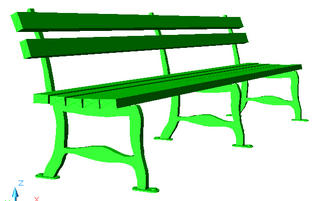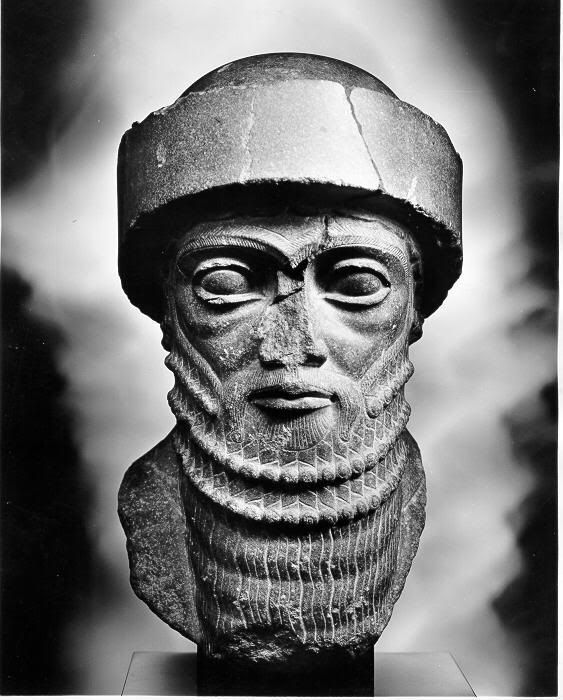A Change in Perspective
 As you can see, it looks a bit more realistic than the first shot I posted.
As you can see, it looks a bit more realistic than the first shot I posted.
For those who don't know, perspective is one of those tricks like the doppler effect that reminds us that our experience of the world is not "reality" per se, but rather an approximation of reality that forms in our little fool-monkey heads out of information we get from our senses.* A pair of train tracks will appear to come together in a single point somewhere near the horizon, even though they remain the same distance apart along their entire length. That you could use this little trick in art to make a painting look more real occurred to people during the renaissance, though the ancient Greeks were already familiar enough with it to write optics papers about it and use it in designing theater sets.
The two-point perspective that Sef talks about just means that you have two vanishing points on either side of an object that is placed directly in the center of the frame, as opposed to linear perspective, which has everything disappear into one central point. You see linear perspective a lot in those older paintings with Jesus framed by two dozen saints and angels scattered all around, with the viewer looking through some huge classical arch, which always gives me the feeling that I'm falling down a well.

The first bench picture was printed out in parallel perspective, which doesn't look natural but shows the object without distortion, i.e., parallel lines on the object will remain parallel. If you were to print out the second picture (I just tried this, but feel free to get several sheets of paper and test this out yourself), you would find that the lines of the chair feet vanish way off to the left, while the lines formed by the boards vanish a bit off to the right.
It's fantastic that Sef's comment prompted me to figure out how to render 'realistic' perspective in the software I'm using, and my urge to communicate this to you guys got me to read up on perspective in art history. This blog is already a success!
If you're tired of my rambling digressions, I should be posting my first building on Monday.
*When I said that the 'reality' of the situation is that the train tracks remain parallel, I was cheating a little. Euclid's fifth and final postulate of geometry claims that parallel lines never meet. Anyone who's walked down a set of train tracks in their life or even driven down I-95 would probably get his back on this one. Unfortunately, Euclid was never able to prove his final postulate, and that's because it might be wrong.
You all know about the three-dimensional world we seem to live in, and you've probably heard people refer to time as the 4th dimension, but a lot of smart physicists are pretty insistent that there's at least one more after this, and that all of the other four are curved in these higher dimensions. Look at this site if you want to see what I'm talking about, but the short answer is that we could be living in a world in which parallel lines do converge, like the lines of longitude on a globe. A father and son team of quick-tempered Hungarians by the name of Bolyai first came up with this idea in the 19th century, and it strongly influenced Einstein's work later on. There's also an option in which there's no such thing as parallel lines, called Riemannian geometry, but I'll save that for another day.


5 Comments:
But what about indie rock?
The bench looks more like a bench now. nice!
By Anonymous, at 5:28 PM
Anonymous, at 5:28 PM
Perspective in indie rock means that a genre like post-rock tends to disappear at the vanishing point the further away it gets.
By Arazu, at 6:17 PM
Arazu, at 6:17 PM
Where is my new post, dude?
By Anonymous, at 10:35 AM
Anonymous, at 10:35 AM
isn't quick tempered automatically assumed when blogging on Hungarians?
By Frank, at 1:03 PM
Frank, at 1:03 PM
Love the bench.
Rieman rocks. Einstein is diesel.
--Flaxman
dflax@yahoo.com
By Anonymous, at 5:28 PM
Anonymous, at 5:28 PM
Post a Comment
<< Home